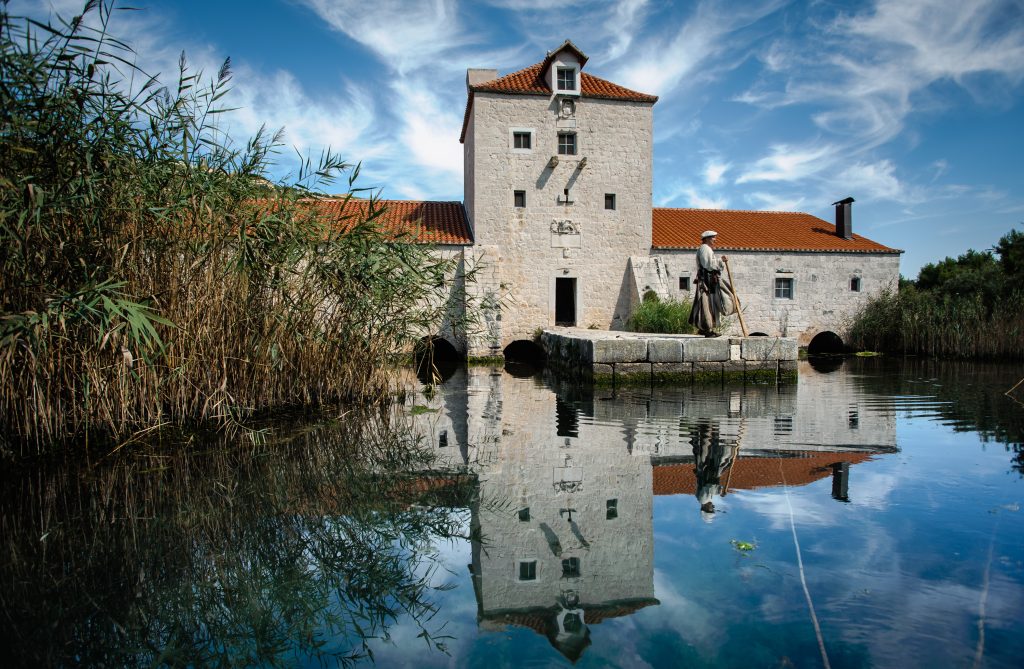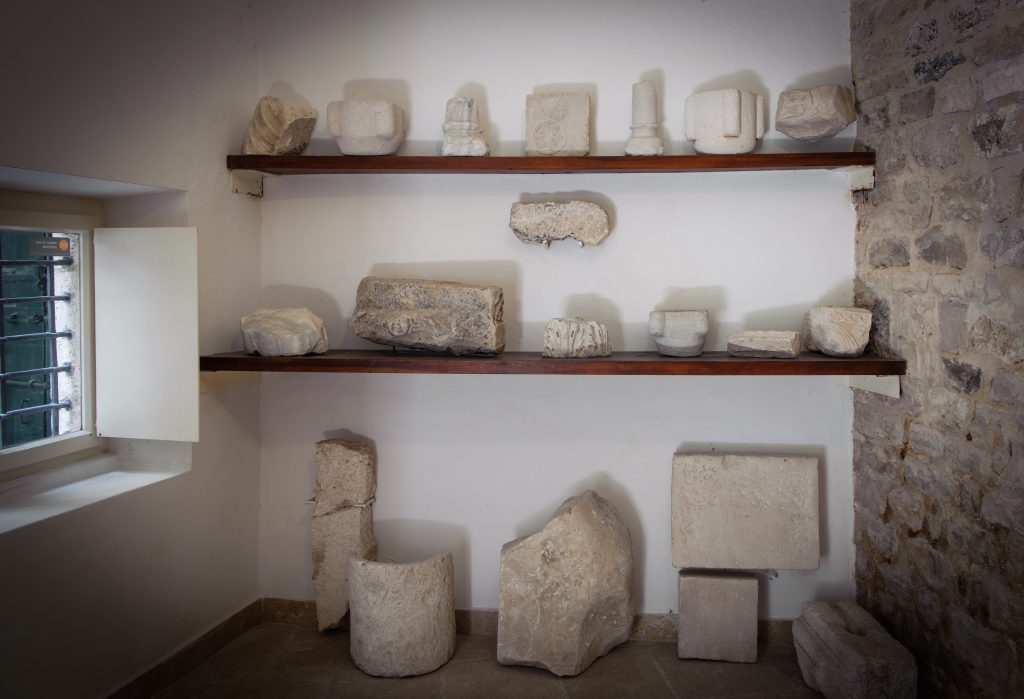29.08.2023.
History of Trogir
Trogir is known for its rich history, and when you find yourself in the old town, time seems to stand still.
Despite the fact that Trogir is thought to be much older, the findings show us that the city was founded at the end of 3rd century BC or at the beginning of 2nd century BC. We have discovered far older remnants of stone tools used by Neanderthal people 45,000 years ago in the immediate area of Trogir.
The old city centre itself was formerly a part of the mainland, which people’s labours helped to split into a small island.
It is assumed that the name comes from the Greek words tragos and oros (goat and hill) and it follows that the city got its name from the neighboring hill where there were many goats – Kozjak
The city was founded by Greek colonies, who liked the fertile fields of Trogir. In the city, Silvanus, the Roman deity of cattle and forests, as well as Bacchus (Dionysus), the deity of grapes and wine, was especially worshipped. Christianity came to the area of Trogir during late antiquity, in the 6th century. The population quickly accepted the new religion, and began to build churches dedicated to numerous martyrs.
Throughout history, Trogir has been under many rulers, and as a more important event we note March 1242, when Trogir hid King Bela IV. and his family from Tatars. The king rewarded this noble gesture with the expansion of Trogir’s borders. The borders stretched from “the pillar under Ostrog” to “the village called Smokvica”, which was owned by the archbishop of Split. In 1271, the first pharmacy in Europe was also opened in the very center of the city.


Communal autonomy is developing in the city, based on Koloman’s privileges and the Statute that the city already had in 1322. Trogir minted its own money (bagattino), made of pure copper with the image of the city’s patron Saint Lovre. A saltwork near Trogir was also in operation, although not of the best quality, it met the needs of the citizens.
The salt house is located in a perfect place for “picking salt”. However, swamp waters that flow into streams become the very cause of the spread of malaria.
Trogir recorded its peak in the period from XIII. to the XV. century.
Social, cultural, economic and artistic power grows, and the city becomes lively. Artists Radovan, Aleši, Blaž Jurjev Trogiranin and Ivan Duknović are one of the many artists who contributed to the appearance of the city that we can see today. During the rule of Venice from 1420 to 1797, the Croatian language was preserved, although the official language was Italian. With the fall of the Venetian rule, Trogir came under French rule, and along with a series of changes, the city walls that protected the old city were demolished.
Up until 1918, when the First World War came to a close, Austria held control. Under their rule the old noble families disintegrated, and the city lost its diocesan status in 1828. At that time, Trogir saw a folk renaissance, leading to the establishment of the Folk reading room and Folk Music. The city was rebuilt in agriculture and shipbuilding during the SFR Yugoslavia, and tourism received a lot of attention.
The old city center is included in the UNESCO cultural heritage list in 1997.
Related blogs
18.09.2024.
St. Martha – Bijaći
The Church of St. Martha in Bijaći, located on the western edge of the Kaštela Plain at the Stombrate site, is among the most important national archaeological sites. The church and the archaeological remains surrounding it form a complex which dates back to the 1st century when a group of agricultural buildings from a larger […]
16.08.2023.
Trogir associations
Trogir associations have been maintaining the city’s culture for years with their dance and musical acts. Their performances attract fans from all over the world. Cultural and artistic society- Kvadrilja In 1969, the KUD association “Kvadrillja” was established. First operating as the folklore division of the Čiovo Youth Association, the society later obtained its official […]
25.07.2023.
Town square and its magic
Surrounded by numerous landmarks, this town square has been the main place of gathering throughout history. The Rector’s Palace is located in the eastern part of the main square. Its construction began in the XIII. century, where the church of St. Stjepan once stood. The openings of the palace overlooking the square are Renaissance in […]